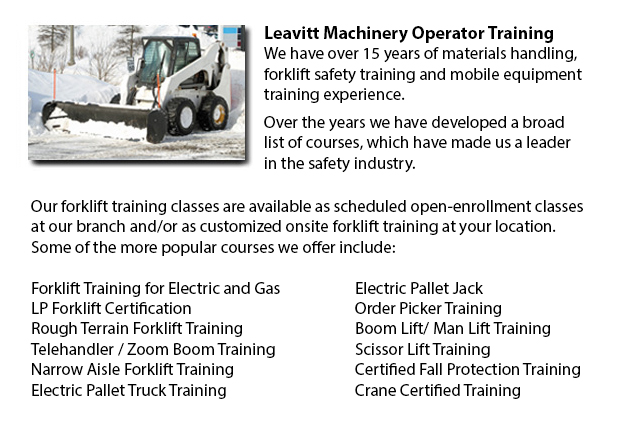
Nanaimo Skid Steer Ticket - On a skid-steer loader, the lift arms are next to the driver with pivot points behind the driver's shoulders. This makes them different than a conventional front loader. Due to the operator's proximity to moving booms, early skid loaders were not as safe as conventional front loaders, especially during the operator's exit and entry. Today's' modern skid-steer loaders have various features so as to protect the driver like fully-enclosed cabs. Similar to other front loaders, the skid-steer model can push materials from one location to another, is capable of loading material into a trailer or a truck and can carry material in its bucket.
Operation
There are various times where the skid-steer loader could be used in place of a big excavator on the job location for digging holes from the inside. To begin, the loader digs a ramp to be utilized to excavate the material out of the hole. As the excavation deepens, the equipment reshapes the ramp making it longer and steeper. This is a particularly useful way for digging underneath a structure where there is not adequate overhead clearance for the boom of a big excavator. For example, this is a common scenario when digging a basement underneath an existing home or structure.
The skid-steer loader attachments add much flexibility to the machinery. For instance, traditional buckets on the loaders can be replaced accessories powered by their hydraulics comprising backhoes, tree spades, sweepers, mowers, snow blades, cement mixers and pallet forks. Various other popular specialized buckets and attachments comprise tillers, stump grinders rippers, wheel saws, snow blades, trenchers, angle booms, dumping hoppers, wood chipper machines and grapples.
History
The front end 3-wheeled loader was invented in the year 1957, by Cyril and Louis Keller in their hometown of Rothsay, Minnesota. The Keller brothers made this equipment to be able to help mechanize the method of cleaning in turkey barns. This machine was compact and light and included a back caster wheel which enabled it to maneuver and turn around within its own length, allowing it to carry out similar jobs as a conventional front-end loader.
The Melroe brothers of Melroe Manufacturing Company in Gwinner, N.D. purchased in 1958, the rights to the Keller loader. The business then employed the Keller brothers to assist with development of the loader. The M-200 Melroe was the end result of this partnership. This particular model was a self-propelled loader that was introduced to the market during the year 1958. The M-200 Melroe featured a a 750 lb capacity, two independent front drive wheels, a rear caster wheel and a 12,9 HP engine. By nineteen sixty, they replaced the caster wheel together with a back axle and introduced the first 4 wheel skid steer loader that was referred to as the M-400.
The term "Bobcat" is used as a generic term for skid-steer loaders. The M-400 soon after became the Melroe Bobcat. The M-440 version has rated operating capacity of 1100 lbs powered by a 15.5 HP engine. The business continued the skid-steer development into the mid nineteen sixties and introduced the M600 loader.
-
Nanaimo Boom Lift Certification
Nanaimo Boom Lift Certification - Using elevated work platforms allow for maintenance operations and work to be carried out at elevated work heights which were otherwise not reachable. Workers making use of scissor lifts and boom lifts can learn how... More -
Nanaimo Boom Lift Safety Training
Nanaimo Boom Lift Safey Training - Boom lifts are a kind of aerial lifting device or elevated work platform which are commonly used in industry, warehousing and construction. Boom lifts could be utilized in practically whichever environment because o... More -
Nanaimo Loader Operator Training
Nanaimo Loader Operator Training - Loader Operator Training - Forklift training is a prerequisite within North America and is intended to prevent workplace death and injuries. Lift truck training provides driver training intended for forklift operato... More -
Fall Protection Certification in Nanaimo
There are high numbers of injuries at work associated to falling and lots of fall-related deaths reported each and every year. Most of these instances might have been prevented with better training, better measures in place, and by properly equipping... More -
Nanaimo Crane Ticket
Nanaimo Crane Ticket - The modern version of a crane can be either complex or simple, and cranes vary based on their use. Mobile cranes, for example are rather simple. A telescopic boom or steel truss mounts its movable platform. A system of levers o... More -
Operator Safety Certification | Re-Qualification Certification | In-House Instructor Certification in Nanaimo
Lift trucks are used in practically all industrial construction sites and in warehouse operations and in boat yards. The reach feature of a forklift is a very important part utilized in several applications like when a shelving system is being used t... More -
Aerial Lift / Boom Lift / Man Lift / Scissor Lift Certification in Nanaimo
Scissor hoists are lift tables which lift up materials and individuals and supplies vertically. They are normally used in construction, commercial and industrial environments. A common use of scissor hoists is for lowering or lifting construction sup... More -
Crane / Overhead Crane / Self-Erect Crane / Truck Mounted Crane / Hydraulic Cranes Certification in Nanaimo
Bridge cranes or likewise called overhead cranes are a type of industrial material handling crane utilizing a line and hook apparatus that runs on a horizontal beam running along two widely separated rails. Several overhead cranes can be seen inside... More

Forklift Certification Nanaimo
TOLL FREE: 1-888-254-6157
Nanaimo, British Columbia
forkliftcertificationnanaimo.com
Email Us
About Us


